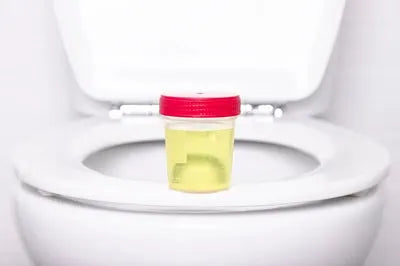Living with stress incontinence can be distressing and embarrassing. The sudden leakage of urine during everyday activities like coughing, sneezing, or exercising can impact self-confidence and overall quality of life. Many people suffering from this condition feel isolated, avoiding social gatherings and even limiting physical activity to prevent accidents. If you or a loved one experiences these struggles, know that you are not alone, and effective treatments are available.
One such promising method is biofeedback therapy. This non-invasive approach has been gaining recognition as an effective way to help individuals regain bladder control. By understanding how biofeedback therapy works and its benefits, you can explore this option as a viable stress urinary incontinence treatment.
What is Stress Incontinence?
Stress incontinence is a condition where involuntary urine leakage occurs due to sudden pressure on the bladder. This often happens during physical activities such as laughing, lifting heavy objects, sneezing, or exercising. Unlike urge incontinence, which is caused by an overactive bladder, stress incontinence is typically linked to weakened pelvic floor muscles and a lack of support for the bladder and urethra.
This condition is more common in women, especially after childbirth, menopause, or surgeries that weaken the pelvic region. However, men can also develop stress incontinence, particularly after prostate surgery. While the severity varies from person to person, it can be a significant source of discomfort and emotional distress. With Friends Classic Adult Dry Pants, you don’t have to worry about sudden leaks holding you back. Stay dry, stay confident, and keep doing what you love!
Understanding Biofeedback Therapy
Biofeedback therapy is a non-invasive technique used to train individuals to control bodily functions that are typically involuntary. In the context of stress incontinence treatment, it helps patients strengthen their pelvic floor muscles, improving their ability to manage urine flow effectively.
The therapy involves using sensors placed on the abdomen, pelvic floor, or in the vaginal or anal region to monitor muscle activity. These sensors send signals to a screen or speaker, providing real-time feedback about muscle movements. By seeing or hearing this feedback, patients learn how to engage and strengthen the right muscles, leading to better bladder control.
A trained healthcare professional, such as a physiotherapist or urologist, guides patients through the process, ensuring they activate the correct muscles. Over time, with consistent practice, individuals can improve muscle coordination and reduce involuntary leakage episodes.
Benefits of Biofeedback Therapy for Stress Incontinence
Biofeedback therapy strengthens pelvic muscles, enhances control, and offers a safe, non-invasive solution for long-term relief.
Strengthening Pelvic Muscles for Better Bladder Control
Weak pelvic floor muscles are a leading cause of bladder leakage. Biofeedback helps individuals correctly engage these muscles, improving control and reducing accidental leaks.
A Safe, Non-Invasive Solution
Unlike medications or surgical procedures, this therapy offers a natural approach to managing urinary leakage. With no drugs involved, it’s a safe choice for those seeking holistic care.
Improved Muscle Coordination
Many people unknowingly use incorrect muscle groups when trying to prevent leaks. Real-time feedback during therapy helps refine techniques for better coordination and effectiveness.
Tailored to Individual Needs
Each person responds differently to treatment. This approach can be customized to suit specific requirements, ensuring targeted and effective care.
Complements Other Treatments
This method works well alongside pelvic exercises, lifestyle changes, and dietary adjustments, creating a well-rounded plan for managing urinary leakage.
Enhancing Daily Comfort
Regaining control over bladder function not only restores confidence but also allows individuals to navigate daily life without constant worry. While biofeedback therapy and pelvic floor exercises can help improve bladder control over time, having reliable protection during the journey is essential.
Friends Adult Dry Pants provide superior comfort and leakage protection, acting as a dependable companion until long-term treatments take effect. With a snug fit that ensures dryness and security, they offer peace of mind, allowing individuals to focus on their progress without the fear of accidents holding them back.
Reducing the Need for Surgery
For those looking to avoid invasive procedures, this therapy provides an effective alternative to options like bladder sling surgery or urinary sphincter implants.
Long-Term Benefits
Rather than offering just a temporary fix, this method empowers individuals with the skills and awareness necessary for lasting bladder control, lowering the risk of recurrence.
Stress incontinence is a challenging condition that affects both physical and emotional well-being. While it can feel overwhelming, various stress incontinence treatments exist to help manage and alleviate symptoms. Biofeedback therapy stands out as a highly effective, non-invasive option that empowers individuals to regain bladder control through muscle training and awareness.
If you or someone you know struggles with stress incontinence, consulting a healthcare professional about biofeedback therapy could be a transformative step towards a more confident and comfortable life. With the right guidance and persistence, it is possible to reduce leakage episodes and enjoy daily activities without worry. Additionally, using Friends Adult Diapers can help provide extra security and comfort during treatment.
Product Recommendations
FAQs
1. What is the role of biofeedback in stress incontinence
Biofeedback helps individuals understand and control their pelvic floor muscles using sensors that provide real-time feedback, improving bladder control in stress incontinence.
2. Which treatment helps in relieving stress incontinence?
Treatment options include pelvic floor exercises (Kegels), lifestyle changes, medications, and surgical procedures like a mid-urethral sling for severe cases.
3. What is the role of physiotherapy in stress urinary incontinence?
Physiotherapy strengthens the pelvic floor muscles through targeted exercises, improving bladder control and reducing urine leakage.
4. What is the best procedure for stress incontinence?
The mid-urethral sling procedure is considered the most effective surgical treatment for stress incontinence, providing long-term relief.
5. What exercises fix stress incontinence?
Kegel exercises, core strengthening workouts, and bladder training techniques can help improve bladder control and reduce stress incontinence.





















